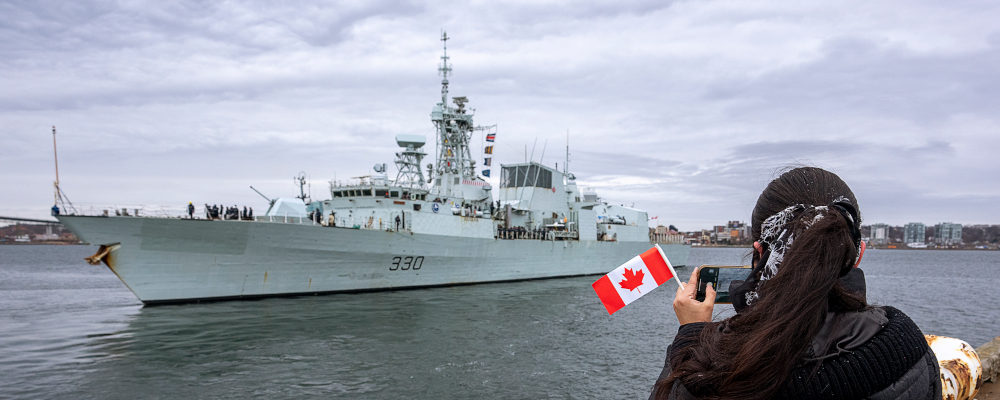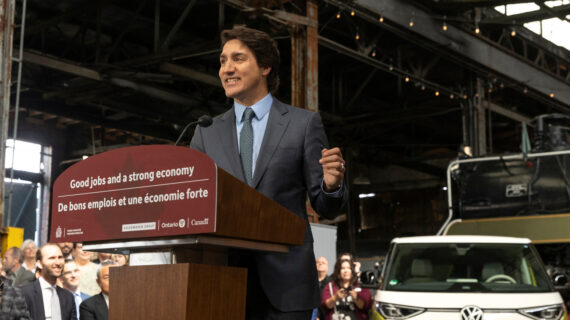Russia’s invasion of Ukraine has upended the geopolitical landscape for many countries, including Canada.
It has also reinforced the value of NATO and the importance of ensuring the armed forces of these allied countries are well resourced—with a target agreed to in the 2014 “Defence Investment Pledge” for each country to spend at least 2 percent of GDP by 2024.1“All 30 Allies contribute to the NATO budget on an agreed cost-share formula based on Gross National Income, which represents a small percentage of each member’s defence budget. This is the principle of common funding, and demonstrates burden-sharing in action.” https://www.nato.int/cps/en/natohq/topics_67655.htm
Currently, many countries fall short. Canada ranks 25th out of 30.
This may soon change. At the March 24 meeting of NATO Heads of State and Government, the allies all agreed “to accelerate our efforts to fulfil our commitment to the Defence Investment Pledge in its entirety”.
Several countries have already committed to increases. Poland will increase military spending to 3 percent of its GDP, Romania to 2.5 percent, Germany to more than 2 percent, and Italy, Spain, Denmark, and potentially the Netherlands to 2 percent. The Slovak Republic not only agrees but goes further to say 2 percent should be the base, rather than the target. The commitments of these eight countries are equivalent to 0.6 percentage points of their overall GDP—similar to what Canada needs to also achieve the target.
Before going further, let me be perfectly clear: I’m an economist, not a defence policy expert. I don’t know what the optimal level of military spending is or how it should be allocated. I also don’t know whether Canada’s problematic procurement systems can effectively absorb such an increase.
Instead, my aim is to map out the fiscal choices available to fund Canada’s increases. And as I’ll show below, there are many reasonable options.
The fiscal context
Canada has already increased military spending from one percent of GDP in 2014, when the NATO Pledge was made, to 1.4 percent in 2021. And current policy under the Defence Investment Plan is set to increase this further, potentially reaching 1.5 percent by 2024 but declining slightly thereafter.
Achieving a 2 percent of GDP spending level by 2024, therefore, represents an increase of 0.5 percentage points of GDP above the current policy. This would mean a military budget of $58 billion by 2024—nearly 70 percent higher than was spent in 2021.
I’m going to go out on a limb and suggest this may be infeasible (or at least unwise), given the challenges of procurement, recruitment, etc. Increasing to 1.5 percent in 2023 and by 0.1 percentage points annually thereafter might be more reasonable. This would lead to a 2 percent military spending level by 2028 and is consistent with a recommendation made in a 2017 Senate of Canada report suggesting this be the target.2“The Committee is convinced that Canada must increase defence spending to 2% of GDP starting in 2018 and continue increasing spending by 0.1% of GDP each year until 2028. To see how we get there, please refer to the table on Page 18. This proposal will reverse the decline in spending and will put the military on a course to be able to fulfil the stated government requirement to simultaneously meet Canada’s obligations to NORAD and NATO, as well as to providing the necessary security for our own citizens.” https://sencanada.ca/content/sen/committee/421/SECD/Reports/DEFENCE_DPR_FINAL_e.pdf
Whatever the pace of growth, important fiscal choices are required to support it.
Lower other spending
Increasing defence spending could be offset by decreasing spending elsewhere.
For perspective, meeting the 2 percent target is equivalent to an across the board 10 percent reduction in direct federal operating expenses—returning such spending to its 2016-17 level. Lowering transfers to provinces by roughly 15 percent could also create the necessary room.
But sudden reductions in any area are not necessary.
If the increase in military spending is phased in by 2028, then other federal spending could still increase—just at a slower rate. I estimate program spending (excluding the incremental boost to military spending) could grow over the five years from 2023 to 2028 by an average of 1.8 percent per year to accommodate reaching the 2 percent target.
One option could do much of the heavy lifting: make elderly benefits less generous.
As Canada’s population ages, spending on elderly benefits is set to rise dramatically. Indeed, the increase in military spending required to reach the 2 percent target is less than the projected increase in OAS and GIS payments by 2030.
Re-establishing the previously planned increase in the age of OAS eligibility to 67 (over the period 2023 to 2029), which was cancelled in 2016, would fund roughly half of the military spending increase. And reversing recent increases to OAS could be worth another 0.12 percentage points of GDP.
There are obvious political challenges with this, and one can certainly disagree with its merits. But as our population ages, it’s a conversation we shouldn’t shy away from.3“We propose that legislators defer the target eligibility age for full benefits under the CPP/QPP from 65 to 67 while at the same time deferring the minimum early retirement age to 62 and the maximum postponed retirement age to 75. We are seeing increased participation rates at older ages in the working population and this trend is projected to increase over the years.” https://www.cia-ica.ca/docs/default-source/Public-Statement/219042e.pdf
Raise taxes
We could also increase government revenue. There are countless options here.
Returning the GST to 7 percent, for example, increases revenues by roughly two-thirds of a percent of GDP—more than enough to cover the military spending increase.
Alternatively, we could increase marginal personal income tax rates by roughly 1.5 percentage points across all tax brackets. Importantly, increasing rates on only the highest-income Canadians wouldn’t get you very far. Each percentage-point increase in the top tax rate, for example, may yield roughly $370 million per year. And increasing the corporate tax rate dramatically to 20 percent might get you halfway to the target.
A sensible route might be to modestly increase several tax rates and fees. For perspective, reaching the 2 percent target by 2028 could be covered by increasing total federal tax revenues by approximately 5 percent across the board.
Combined with modest spending growth restraint, revenue increases could be even less.
Borrow the money
A third option requires neither (current) tax increases nor spending reductions: borrow the money.
This may sound irresponsible (and there are certainly tradeoffs to this option, and I’m not personally a fan) but it’s a feasible option. The federal government’s long-run fiscal capacity is large. A declining debt-to-GDP ratio is a strong indicator of long-run fiscal sustainability, and the federal debt ratio is set to decline consistently in the coming years.
Using the PBO’s latest Economic and Fiscal Outlook, I estimate that the federal government has room to increase spending by approximately 1 percent of GDP while maintaining its current net-debt-to-GDP ratio. And over a longer-term horizon, as illustrated by the Finances of the Nation’s Debt Sustainability Simulator, it has even more room to manoeuvre.
This is a risky option, to be clear. Adverse moves in future interest rates or economic growth would be more difficult to manage. It also erodes the fiscal room that may be required to assist provincial governments facing unsustainable finances. But it is a feasible option that, at the very least, may be required in the short term.
A budget to watch
This is anything but an exhaustive list of options available to boost Canada’s military spending. But it hopefully illustrates that accommodating increased military spending, even relatively rapid increases, is entirely manageable from a narrow fiscal perspective.
Pressure to increase military spending is mounting. The NATO Secretary General recently called on Canada to do just that. And former Deputy Prime Minister and current Conservative Party leadership candidate Jean Charest made a strong case in an article for The Line. The government’s own defence minister, Anita Anand, is currently exploring “aggressive” options but will need support in Cabinet to move any plan forward.
Polling suggests Canadians may “marginally favour” increased defence spending, though there is little agreement on how best to fund it. Luckily, there are many options.4“The latest national public opinion poll from Nanos Research, commissioned by CTV News and The Globe and Mail, reports that 19 per cent of respondents support and 28 per cent somewhat support the move. However, polling showed 31 per cent of those surveyed oppose raising taxes for defence spending while 17 per cent somewhat oppose it.” https://www.ctvnews.ca/canada/canadians-split-on-raising-taxes-for-defence-spending-poll-1.5830763
The upcoming federal budget may provide an indication of what the government has in mind. For this and so many other reasons, it will be an important budget to watch.




